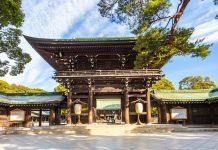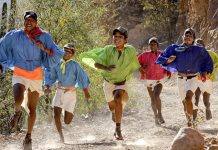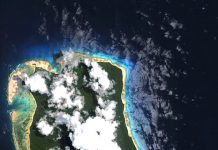Covering under snow, surrounded by the Lake, River, and Plane, Grand Teton is the perfect place to wind down. The purplish-gray, jagged peaks of the Teton Range jut into the sky above the flat Snake River valley is the gorgeous Jackson Hole Valley. Grand Teton’s trails lead hikers and horseback riders through a forest of rustling aspens and past glassy Jenny Lake. Let us know some interesting facts about this beautiful Wyoming place, The Grand Teton:

image: brushbucktours.com
1. The Disputed Name: “Grand Teton”
Grand Teton’s name was first recorded as Mount Hayden by the Washburn-Langford-Doane Expedition of 1870. But this name “Grand Teton” had early currency. Most people say that “Grand Teton” means “large teat” in French, named by either French-Canadian members of an expedition. While other historians disagree and claim that the mountain was named after the Teton Sioux tribe.
source: Wikipedia
2. Highest Point

Grand Teton, located at 13,775 feet (4,199 m) is the highest point of the Teton Range and the second highest peak in the U.S. state of Wyoming after Gannett Peak. The peak extends from southern Alaska to northern New Mexico.
source: britannica.com, image: shannontech.com
3. Controversial Ascent
There is a disagreement over who first climbed Grand Teton. Nathaniel P. Langford and James Stevenson claimed to have reached the summit on July 29, 1872. But, some people believe their description matches the summit of The Enclosure, a side peak of Grand Teton.
source: Wikipedia
4. Entire National Park Named After It!

Grand Teton is a classic alpine peak in itself to the point that an entire national park was named after it. Climbers have been drawn to “The Grand” for over 100 years and continue to make pilgrimages from all over the world. Grand Teton is the highest mountain in this national park.
source: summitpost.org, image: yellowstonerv.com
5. Early Inhabitants

Many evidence suggests that the Grand Teton area was first inhabited by the Native Americans, some 11,000 years ago. Mainly, those people were hunters and food gatherers.
source: enjoyyourparks.com, image: offthegridnews.com
6. Only 10 Million Years Old!
The Tetons are a relatively young 10 million years old. The peaks have been pushed up over time as Jackson Hole has sunk, thanks to the Teton fault, which runs along the eastern edge of the range.
source: climbing.com
7. “The Three Beasts”
French trappers are responsible for naming the three peaks now known as the South, Middle, and Grand Teton. They called the mountains “Les Trios Tetons,” or “The Three Breasts.” The Grand Teton—the tallest of the three—literally means “the big tit.”
source: climbing.com
8. The Grand Teton Glacier

The largest of the glaciers is Teton Glacier, found on the north side of the Grand Teton peak. Apart from that, other glaciers that are found in the Grand Tetons Park are glaciers include Schoolroom, Triple, Falling Ice, and Skillet.
source: mentalfloss.com, image: davidtosch.com
9. First Ski Descent

Bill Briggs made the first ski descent of the Grand on June 15, 1971, igniting the sport of ski mountaineering in North America. Since Briggs’s descent, the Grand has been skied via at least three different routes.
source: climbing.com, image: powder.com
10. No Climbing Experience Required
If you are not trained to climb the mountains, its ok. People can climb this mountain easily. The premier Grand Teton experience combines training, acclimatizing, camping, and climbing the Grand during four memorable days and three nights. You need have a prior climbing experience.
source: jhmg.com
11. A Filming Location

Jackson Hole and the Tetons have been the setting for a number of films, including John Wayne’s movie acting debut in The Big Trail in 1930 and the western film classic, Shane in 1953.
source: Wikipedia, image: jacksonhole-traveler-production.s3.amazonaws.com
12. Made Up Of Gneiss!
The Teton Range including the Grand Teton is largely made up of extremely old Precambrian metamorphic rocks known as gneiss. Years ago magma cracked through the gneiss, forming granite after cooling down.
source: climbing.com
13. Agile Pronghorn

Pronghorns are known to reside in the Grand Teton Park. As the fastest land mammal in the western hemisphere, they are capable of reaching speeds up to 70 mph.
source: mentalfloss.com, image: 3.bp.blogspot.com
14. Overlook A Snake!

Snake River passes through Grand Teton National Park. It is a breathtaking view whether you have a camera in your hand or go there just to enjoy it!.
source: bestofthetetons.com, image: 2.bp.blogspot.com


















